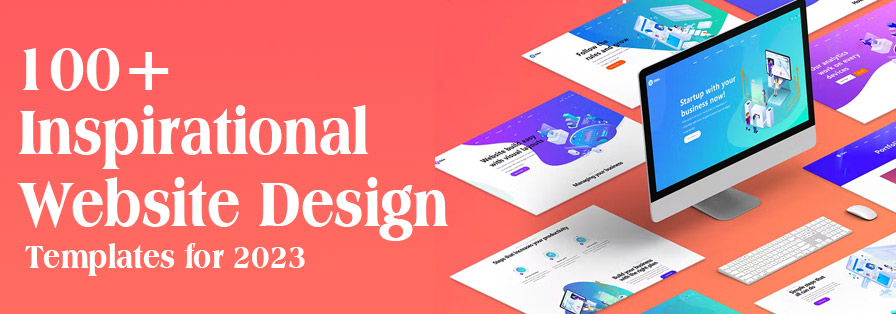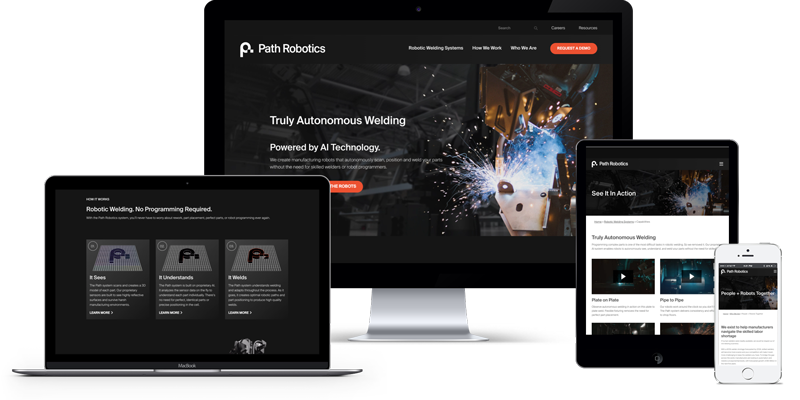Make The Most Of Engagement: Proven Techniques for Exceptional Website Design
In an increasingly electronic landscape, the value of a user-centric method to site design can not be overemphasized. Recognizing exactly how reliable navigating, aesthetic pecking order, and material optimization merge to improve user interaction is essential for any type of organization looking for to make a purposeful effect. As we check out numerous tested techniques that add to superior internet site design, the interplay between these elements reveals not just ideal methods but also cutting-edge approaches that can boost customer experience. What might surprise you is how basic changes can bring about amazing changes in involvement metrics.
Value of User-Centric Design
User-centric style is vital in developing reliable web sites, as it focuses on the requirements and choices of the end user from the very start of the layout process (website design). This technique ensures that the internet site is tailored to give an optimum experience for customers, assisting in engagement and complete satisfaction. By recognizing individual behaviors, objectives, and discomfort factors, developers can develop user interfaces that resonate with their target audience and promote a sense of connection
Carrying out user-centric design involves comprehensive study, consisting of individual identities and trip mapping, which help in determining the particular demands of various customer segments. This data-driven method enables educated decisions pertaining to functionality, design, and web content, eventually resulting in the development of an extra intuitive and enticing web experience.
In addition, a user-centric strategy advertises ease of access and inclusivity, ensuring that internet sites deal with diverse individual abilities and choices. This not only enhances user experience yet additionally expands the audience reach. In a competitive electronic landscape, prioritizing user-centric style is not merely beneficial; it is necessary for driving engagement, reducing bounce rates, and promoting customer loyalty. Efficient web sites are those that resonate with individuals, making user-centric layout a fundamental concept for effective web development.
Efficient Navigating Techniques
A well-structured navigation system is a foundation of reliable web site design, building directly on the concepts of user-centric style. Reliable navigation allows customers to find information swiftly and intuitively, improving their overall experience and encouraging longer sees.
To attain this, consider executing a clear hierarchy in your navigating menu. Key categories ought to be promptly visible, while subcategories can be exposed through dropdowns or expandable food selections. This organization aids users expect where they might discover appropriate web content, decreasing frustration.

Uniformity is crucial; make use of familiar terminology and layout elements throughout the site to stay clear of complication. Breadcrumb tracks can likewise be advantageous, supplying users with contextual understanding of their area within the site and allowing very easy backtracking.
Finally, guarantee that your navigating is mobile-friendly and receptive. As even more individuals gain access to websites by means of mobile phones, adjusting your navigating for smaller screens is essential for maintaining usability and availability. By prioritizing these approaches, you can produce a seamless navigating experience that keeps users engaged.
Visual Hierarchy and Layout
Developing a clear visual power structure is important for leading users via a web site's web content effectively. A well-structured design not just boosts individual experience but additionally affects just how visitors regard and engage with information. By tactically using dimension, shade, contrast, and spacing, developers can create prime focus that accentuate one of the most crucial components, such as headlines, calls to activity, or pictures.
Incorporating a grid system can additionally boost visual power structure by offering a constant framework for material placement. This organization allows individuals to navigate the website intuitively, making it easier to digest information (website design). he said Furthermore, making use of whitespace is read here vital; it creates breathing space around components, reducing cognitive overload and emphasizing vital material

Material Optimization Techniques
While developing aesthetically appealing designs is necessary, the efficiency of a site eventually hinges on how well its material is maximized for both internet search engine and customer interaction. Content optimization includes a critical approach that boosts presence and relevance, ultimately driving traffic and retaining visitors.
First, keyword research is fundamental. Determining appropriate key words that straighten with user intent enables the combination of these terms normally right into headings, text, and meta summaries. This not just assists in rating greater on online search engine yet also boosts the quality of content for individuals.

In addition, optimizing for local SEO can improve interaction for region-specific audiences. Incorporating localized key words and producing content that addresses regional interests improves relevance.
Lastly, on a regular basis upgrading material guarantees that it continues to be fresh and valuable, attracting both search engines and returning users. By concentrating on these content optimization techniques, services can develop an engaging on the internet presence that promotes interaction and drives conversions.
Responsive and Mobile-First Approaches
User engagement and try this site web content exposure are increasingly affected by the ability of a website to adjust perfectly across numerous tools. With the surge of mobile browsing, using receptive style and mobile-first methods has actually become necessary for effective web development. Receptive layout ensures that a single site layout changes fluidly to different display sizes, from desktop computers to smartphones, consequently giving a regular customer experience.
On the various other hand, a mobile-first method prioritizes the mobile user experience during the style process. By making for smaller sized screens initially, programmers can concentrate on vital functions and enhance performance, ensuring that users are not bewildered by unnecessary content. This method also enhances packing times, which is vital for preserving site visitors.
Both techniques contribute to greater interaction rates, as users are most likely to connect with a site that is easy to use and aesthetically enticing. Search engines favor mobile-optimized websites in positions, thus improving exposure. In summary, adopting responsive and mobile-first style strategies is important for taking full advantage of individual involvement and guaranteeing that material remains available and efficient throughout all devices.
Final Thought
Finally, the implementation of user-centric layout principles is important for optimizing interaction in internet site layout. Efficient navigation methods, a distinct aesthetic power structure, and optimization of material considerably improve individual experience. Additionally, adopting receptive and mobile-first strategies makes sure access throughout various devices. Jointly, these strategies not just facilitate info access yet likewise foster deeper user communication, ultimately contributing to higher involvement rates and total site success. Focusing on these components is necessary for effective web site design.
As we check out different proven strategies that add to exceptional website style, the interaction in between these elements exposes not only ideal methods but additionally cutting-edge strategies that can boost individual experience.User-centric layout is important in developing reliable web sites, as it prioritizes the needs and choices of the end customer from the very start of the layout procedure. Reliable sites are those that reverberate with users, making user-centric layout an essential principle for successful web advancement.
Responsive layout makes certain that a single web site layout adjusts fluidly to different display sizes, from desktops to mobile phones, thereby providing a consistent individual experience.
In recap, adopting responsive and mobile-first layout methods is crucial for making best use of customer engagement and guaranteeing that material continues to be accessible and effective across all devices.